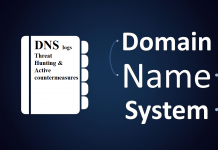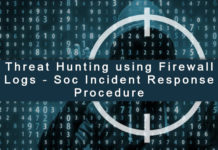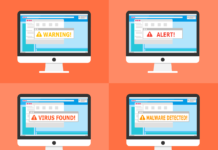In today’s digital landscape, businesses are increasingly vulnerable to data breaches, cyberattacks, and compliance violations. As sensitive information becomes a prime target for malicious actors, managing it securely has never been more critical.
Document management systems (DMS) play an essential role in securing data, streamlining workflows, and fortifying compliance efforts. These systems not only protect sensitive files but also ensure that organizations can efficiently access and manage critical information without exposing themselves to unnecessary risks.
Read on to discover how integrating document management systems can strengthen your cybersecurity posture and protect your business from evolving threats.
Enhancing Data Security through Document Management Systems
A central element of modern cybersecurity is controlling access to sensitive documents. Document management systems provide a secure environment for storing, organizing, and tracking electronic documents, helping companies mitigate the risks of unauthorized access.
Below are the ways DMS contribute to stronger data security:
- Access control: A key feature of a DMS is its ability to implement strict access control protocols. This ensures that only authorized personnel can view or edit specific documents. By using features like user authentication and role-based permissions, businesses can limit who has access to confidential information.
- Audit trails: Document management systems automatically log user activities. These audit trails help track who accessed or modified documents and when, which is critical for identifying potential security breaches. With detailed records of document interactions, companies can quickly address suspicious activity.
- Encryption: Many document management systems offer encryption, both at rest and in transit, which adds an extra layer of security. Sensitive information remains encrypted while stored and when being transferred, making it far harder for malicious actors to intercept or steal.
When you work with a company that offers managed print services, they may help you streamline your document management strategies. These services can further enhance the security of your digital documents and physical records, ensuring that sensitive information is protected from unauthorized access.

Compliance and Regulatory Adherence
As businesses face stricter data protection laws, it’s essential to meet compliance requirements in cybersecurity. DMS play a pivotal role in helping businesses stay compliant with regulatory standards by ensuring the secure handling, storage, and retention of sensitive information.
Below are the ways DMS contribute to regulatory adherence:
- Retention policies: Document management systems allow businesses to set retention schedules for various types of documents, ensuring compliance with regulations like GDPR, HIPAA, or SOX. These systems automatically purge outdated or unnecessary records, reducing the risks associated with storing sensitive data longer than required.
- Policy enforcement: DMS platforms help businesses enforce compliance by automating the application of security policies. For example, documents containing sensitive personal data can be flagged for special handling and encrypted by default.
- Reduced human error: With automation, businesses reduce the likelihood of human errors, such as accidentally sharing confidential documents with unauthorized users or failing to properly archive records. Automation helps ensure that all actions adhere to cybersecurity protocols.
Meeting regulatory requirements through efficient document management minimizes the risks of non-compliance and strengthens a company’s cybersecurity framework.
Mitigating Cyber Risks with Document Management
Cyber risks, including data breaches, hacking attempts, and ransomware, are growing concerns for organizations. A well-implemented DMS mitigates these risks by reinforcing internal security practices and integrating with cybersecurity tools.
The following are ways DMS contribute to cyber risk mitigation:
- Disaster recovery and business continuity: Modern DMS platforms provide robust backup features that ensure documents are stored in multiple locations. In the event of a cyber attack, such as ransomware, businesses can quickly recover important documents from a secure backup, minimizing downtime and the financial impact of cyber disruptions.
- Preventing unauthorized edits: Many DMS platforms allow businesses to lock documents from unauthorized edits or copying. This is especially crucial in scenarios where sensitive contracts, intellectual property, or confidential data are involved. Preventing unwanted alterations is a key part of reducing data corruption during a cyber attack.
- User education and training: A comprehensive DMS includes training modules that educate employees on the proper handling of documents. This proactive approach reduces the likelihood of human error, a common cause of cyber vulnerabilities. It also reinforces the role of employees in maintaining a strong cybersecurity posture.
Document management is a fundamental component of modern cybersecurity, offering protection against cyber threats while ensuring data integrity, controlled access, and operational resilience.
Strengthening Cybersecurity Posture with Document Management
In modern cybersecurity, document management systems play a pivotal role in safeguarding sensitive data. By providing secure storage, preventing unauthorized alterations, and ensuring quick access to crucial documents, these systems are integral to an organization’s overall security framework.
Here’s how they contribute to a robust cybersecurity posture:
- Centralized data management: A DMS centralizes all documents, reducing the likelihood of sensitive files being stored across multiple, unprotected locations. This centralized approach makes it easier to apply uniform security measures across all digital assets and reduces the risk of data leakage.
- Real-time document monitoring: With real-time monitoring features, a DMS can alert administrators when suspicious activity is detected. This proactive approach ensures that any attempt to breach document security is immediately addressed, enhancing the company’s overall security posture.
- Document version control: Version control is another important feature that helps prevent the loss of critical documents. In case of cyber attacks that corrupt files or cause data loss, businesses can revert to previous document versions, minimizing the impact of data breaches.
A strong cybersecurity posture relies on multiple layers of protection, with document management being essential for securing data, ensuring compliance, and maintaining operational resilience.
Final Thoughts
A well-implemented document management system is crucial for strengthening an organization’s cybersecurity posture. By securing sensitive data, ensuring compliance, and mitigating risks, these systems provide businesses with the tools they need to protect their valuable assets. As cyber threats continue to evolve, adopting strong document management solutions will be crucial to staying ahead of potential vulnerabilities.



































